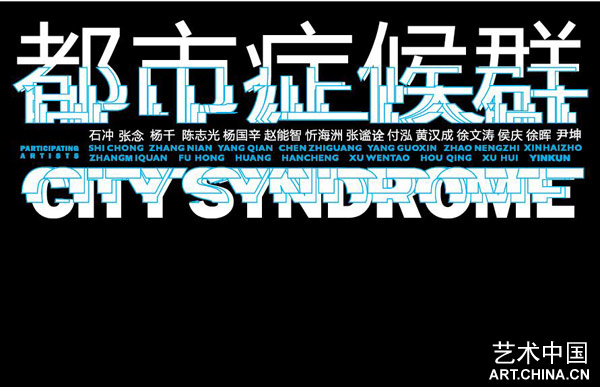|

安德里·彼赫威茨攝影作品展
展覽時間:2008年4月29日至2008年5月4日
開幕酒會:2008年4月29日下午3點
展覽地點:上海多倫現(xiàn)代美術(shù)館三樓展廳(多倫路27號)
主辦:上海多倫現(xiàn)代美術(shù)館
2008年4月29日至5月4日,上海多倫現(xiàn)代美術(shù)館舉辦來自德國的藝術(shù)家安德里·彼赫威茨(Andrej Pirrwitz)的個人攝影作品展,藝術(shù)家將帶我們進入其一系列關(guān)于人、空間、時間的美學(xué)攝影中去。
安德里?彼赫威茨(Andrej Pirrwitz)的攝影作品在客觀現(xiàn)實和抽象之間,在有序和無序之間以及既有條件和分段情況之間變化。從技術(shù)的角度來看,這些作品簡單自然。因為不管是在拍攝過程還是在后期處理中,安德里從來不利用技術(shù)手段改變攝影作品的自然外觀。他故意省卻對主體的人工照明,按下按鈕的瞬間即決定了照片的細(xì)節(jié)、遠(yuǎn)景和構(gòu)圖。之后,也不需要用變形、修改以及電腦加工技術(shù)來改變已拍出的照片。長時間的曝光使畫面中盡可能地吸收了一切在被攝空間中所存在的微觀事物(灰塵、細(xì)微的墻角結(jié)構(gòu)、色彩變化)以及人的行為過程。這些未經(jīng)處理的細(xì)節(jié)真實并不是為了證明什么,而是為了揭示、利用和合成“美麗”的結(jié)構(gòu)。動作則有助于將人物更美地融入不尋常的空間。他的照片表達了個人和其周圍世界之間和諧的可能性—— 一個不再符合其熟悉的結(jié)構(gòu)的世界,一個不斷變化中的世界。
從其作品中,我們經(jīng)常可以看到這樣的畫面:空曠的工廠側(cè)面成為畫面的主體,而無家可歸的人占據(jù)著其中一個角落——工業(yè)廢墟講述著在這里生活的生命,這正是安德里有意尋找的地方。安德里是一名物理學(xué)家,又是一名自學(xué)而成的藝術(shù)家,這些地方對他個人來說具有某種感召力。這些廢棄的滿是灰塵的建筑經(jīng)常是社會變遷的遺跡。它們已經(jīng)被廢棄并且遭到破壞,并且經(jīng)常有被新的居住者無意識使用的經(jīng)歷。這些地方的設(shè)計方式,很容易找到過去和現(xiàn)在的生活的感覺,作為逃亡之地,他們同時也是逃避的地方,給了人們從這個狂熱的、迅速轉(zhuǎn)移和變遷的世界隱退的可能性。
Andrej Pirrwitz Photo Exhibition
Date: April 29 – May 4, 2008
Opening: April 29, 2008 15:00
Venue:3F Shanghai Duolun Museum of Modern Art,No. 27 Duolun Rd., Shanghai
Presented by: Shanghai Duolun Museum of Modern Art
April, 29. 2008 – May, 4. 2008, Shanghai Duolun Museum of Modern Art is going to represent a series of photograph taking by Andrej Pirrwitz who is an artist from German, within his specific viewpoint about photograph, we are going to enjoy the aesthetic in our life from a different dimension.
Andrej Pirrwitz’s photograph exists between the reality and the abstract, and change by separating from organization to non-organization. From the viewpoint of skill, they seem to be done by natural. No matter during the process of shooting or post-production, Andrej Pirrwitz has never used technique skill to change the quality of photograph. He purposely saves artful light from the subject, and everything will be determined while pressing the button. Afterward he does not attend to modify those pictures which were taking by him. During the long over exposure, the picture will absorb as much as mini stuff from the frame (dust, tiny structure of the wall, color change) also the behavior of people. These original pictures will not try to tell something but reveal the beauty by using computer-aided design. Action helps people to get into the unusual dimension smoothly. His pictures show the possibility of harmonious world surrounds us -- a place where we are not familiar with, a place keeps changing.
From his photography, we can often see the scene like: a homeless person occupied in the corner of the empty factory -- industrial vestiges tell the story of lives here, that’s the meaning Andrej Pirrwitz is looking for. Andrej Pirrwitz is a physicist and also an artist who studied by himself, these places inspire inside of him deeply. These abandoned buildings always full of dust are another sign of the changing society. They had been abandoned and ruined by the new residents without notices. The way of design in these places will easily link from past to now, and give people the feeling of escaping from the crazy changing world.
都市癥候群
從都市誕生之日起,都市人就已無可避免地獲得了“都市意識”以及感染了“都市癥候”。都市作為一個不斷擴展的公共空間,不斷侵蝕著個體的私人空間。個人所擁有的領(lǐng)域在都市中屢屢被剝離,人的群居特征在都市的擁抱中迅速轉(zhuǎn)變成真實的孤獨和深重的無助……。工業(yè)化的生產(chǎn)節(jié)奏、信息時代的資訊共享,迅速地改變著人們的經(jīng)驗方式和思維狀況。在波德萊爾所說的“大城市的宗教般的陶醉”與本雅明的“震驚”中,種種獨特癥候在都市中滋生、漫延、激蕩……。
人類創(chuàng)造了都市這一精巧龐大的結(jié)構(gòu),同時,人類也不斷迷失在都市中。當(dāng)代生存以都市為中心,在今天,都市集結(jié)著眾多的生存問題、文化問題和精神問題。故而,呈現(xiàn)都市癥候,不只是文化轉(zhuǎn)型的記錄,而且是對生存狀態(tài)和精神困境的發(fā)問與批判。“大城市幾乎永遠(yuǎn)不可能在將它呈現(xiàn)出來的居民那里得到表達”(本雅明),于是,揭示和表達都市問題的責(zé)任落到了那些既沉陷都市中,又超脫其外的擁有“昂貴的閑暇”的思想家和藝術(shù)家身上。藝術(shù)家們置身于喧囂、紛亂、迷離幻化的都市中,都市本身賦予了藝術(shù)以新的力量,在真切感受都市的各種癥候后,藝術(shù)家們擺脫了以往與田園風(fēng)光和閑情逸致相聯(lián)系的趣味,把關(guān)注的重心和問題意識轉(zhuǎn)移到了都市。
都市的生態(tài)瞬息萬變,其衍生的癥候也層出不窮,這給當(dāng)代藝術(shù)提供了大量的資源以供體察和反省。本次展覽遴選和邀請的,是一部分較有代表性的藝術(shù)家,他們的都市化創(chuàng)作,傾向于關(guān)注都市中人的種種高發(fā)癥候,關(guān)心人在當(dāng)代文化中的生存處境、生命要求和人格傾向,以一種人文主義的姿態(tài),從更直接、更具體、更深入的當(dāng)下經(jīng)驗出發(fā),切入當(dāng)代都市生存的各個方面,呈現(xiàn)藝術(shù)與人的本質(zhì)聯(lián)系和藝術(shù)對當(dāng)代文化的反省。
故而,本展覽希望提供一個平臺,集中檢驗和審視這些藝術(shù)家對都市諸多高發(fā)癥候的梳理和詮釋,既展示其創(chuàng)作成果,也為新的起點和方向建基。
參展藝術(shù)家:石沖、張念、楊千、陳志光、楊國辛、趙能智、忻海洲、張謐詮、付泓、黃漢成、徐文濤、侯慶、徐暉、尹坤 |

